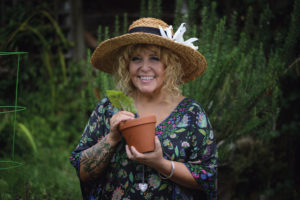Air, food, water, and light are the staple elements your plants need and finding the correct amount of each will make the difference between life and death.
Getting it as close to ideal for each species as possible will make the difference between plants that are living and those that are thriving.
While the first lot of variables can be experimented with over the course of a plant’s life, ‘light’ really needs to be determined before planting.
The amount of light a plant receives over the course of a day, week and year, once in the ground will be set depending on the position it sits in.
How do you figure this out?
With Sun Mapping.
This simple (and rather fun) exercise shows where the shadows will fall over your garden.
When purchasing plants, this information can be found on labels or by asking your friendly garden centre team.
A good gardening or the internet can also lead you to the answer for established plants if you think this might be the reason they are doing well.
Direct sun means there are no shadows falling on the plant at all.
Full sun means at least 6 hours of direct sun, part-shade is between 4 to 6 hours of direct sunlight and shade will mean less than 4 hours of direct sun falling upon your plant.
These are all indications of what is required for your plant, and you need to get this right.
The problem some gardeners have over light requirements is that they either ignore the guidelines or they plant in a position that has the correct amount of sun on planting day but roll forward a few hours, days or months and it’s a different story.
There are few ways to get this information for your garden and at the moment, in lockdown, you do have time to ‘follow the sun’!
A Simple Sun Map
By creating a record of the shadowed areas throughout the day you can determine the classification of each area … whether it is sunny, part-shade or shady.
You don’t need to even draw to scale for your Sun Map to work.
You will need: a sheet of paper (A4 or larger), 3 sheets of tracing paper the same size (or baking paper cut to size), a black marker and coloured pencils.
Onto a piece of paper draw out the outline of your garden with the black marker as if you were hovering in the sky directly above it.
Include the structures in and around it that will obviously throw some shade. In a nice way!
Three times spaced over the day, go out and take a photo of the shadows in your garden.
You may find this easier as you can then do your Sun Mapping indoors, but you can simply get out there and draw the shadows on site.
Dedicate a different sheet of tracing paper and a different coloured pencil for each of the times that you choose to do this and note on the tracing paper the time.
You can do this more often and have more sheets (especially if you are looking for a nice long project with the kids!)
Place the tracing paper over your original plain paper map and roughly outline the shadows and then lightly colour them in.
Use a different piece of tracing paper for each time.
Once your day is complete, sandwich the tracing papers together and place over the original plain paper map.
This is your completed Sun Map for that day and to read it, you look at the overlaps.
If an area is completely free of shade all day, or has one shaded map layered upon it, then it is sunny.
An area that has two shaded sheets upon it can be determined to be part shade.
If the area has three to four shady sheets lying over it, then it is shady.
This equation is for three recordings of shade so you want to do more times through the day, I’m sure you will be able to determine what looks like shady, part shade and sunny.
The areas will change over the course of a year, so to get an accurate Sun Map, you need to create a sun map at least twice a season; around eight times a year.
Plantings also grow and if you have deciduous trees in or around your garden then they will also change the shade that is cast upon your map.
You will need to include their shade patterns.
All these things can be factored into your map and any map is better than no map.
Sun Mapping through the Year
What about the rest of the year I hear you ask!
The sun does slowly move across our sky at ever changing angles as the year rolls on and days become shorter or longer.
This will naturally change the length and hence the areas of shadows in your garden.
What was once a sunny position may turn out to be part-shade in winter for example.
To help, there are a few different ways to create your Sun Map for different times of the year.
Online there are these free tools: sollimus.com; suncal.net; findmyshadow.com
Like most things in life, there is an app for Sun Mapping, a few actually.
The one I use in my gardening design adventures is the paid version of ‘Sun Seeker’.
You can stand at any spot of your garden and see the sun’s path for any given time.
There are a few free versions of similar sun path apps, and ‘Find my Shadow’ also has an app that is only $2.99.
There are also a few physical tools available that can help you determine the amount of light an area receives.
The first are garden light meters, aka sunlight calculators – these just tell you how much light falls upon them and that’s not helpful over any area bigger than the device itself.
The only tool I have personally found that would be of benefit is the ‘Solar Pathfinder’ but unless you are a professional builder or landscaper it really is an unnecessary expense.
GARDEN BOOK REVIEW
RHS Your Wellbeing Garden, How to Make Your Garden Good for You – Science, Design, Practice, Matthew Keighley and Alistair Griffiths, Dorling Kindersley.
While I’m sure I’m singing to the choir here, this book sets out at first to explain why gardening is so good for us.
It then dives deeper into ways that you can consciously create spaces that directly enhance your mental and physical health.
Your Wellbeing Garden will help you select, grow, and use plants in ways that will make you and your garden feel better … I give this one 5 leaves out of 5 leaves.
TIME TO GET YOUR HANDS DIRTY
Still not much rain around this week across the Coast so make sure everyone in your garden is getting a good deep drink.
The days are warming up and we are heading into a pruning period so get those tools out for a good clean and sharpen as well.
You could plant artichokes, asparagus crowns, cape gooseberry, capsicum, beetroot, broad beans, cabbage, carrot, English spinach, lettuce, mustard, spring onions, parsnip, peas, potatoes, radish, rhubarb crowns, salsify, silverbeet, sweet corn, aster, alyssum, calendula, California poppy, carnation, celosia, chrysanthemum, cosmos, dahlia, dianthus, everlasting daisies, gazania, gerbera, Irish bells, marigold, petunia, salvia, zinnia, kangaroo paw, nasturtium, snapdragon, salvia, statice.
YOU & YOUR GARDEN
Q. Dear Cheralyn, really enjoy your info in the newspaper. I am new to Central Coast. Could you please help me with when to cut back a passionfruit growing since last year? Thanks, Paula
A. Hi Paula and thank you for reading Down in the Garden.
Pruning passionfruit helps it produce new growth which in turn produces new flowers and then the fruits will grow.
The time to cut back your passionfruit is in a couple of weeks, early Spring, once the coldest temperatures have left us.
I’m not too sure where you are on the Coast but if you are in the hinterland this might be closer to the end of September.
Cut away a good third of the growth but don’t remove the main vines or supporting areas of growth.
Once you finish, give your passionfruit vine a nice feed of blood and bone to get it growing.
Simply spread around the base of the plant to about a meter out and rake it into the ground well.
Good luck Paula and I’d love to see photos of your crop!
NEXT WEEK: Australian Natives for Shady Gardens
Cheralyn Darcey is a gardening author, community garden coordinator and along with Pete Little, hosts ‘At Home with The Gardening Gang’ 8 – 10am every Saturday on CoastFM963
Send your gardening questions, events and news to: gardeningcentralcoast@gmail.com





